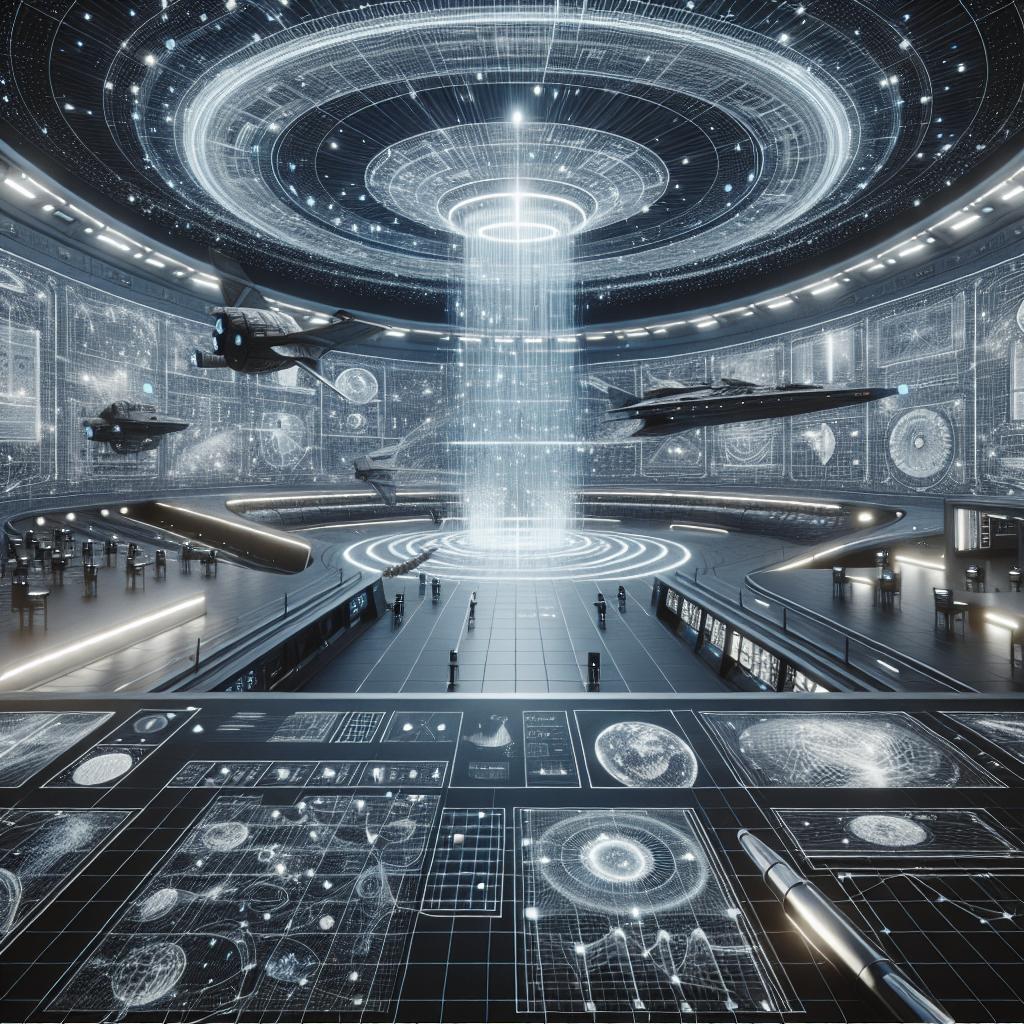“`html
Exploring the Star Trek Holodeck Concept Art
The concept of the holodeck, a simulated reality facility from the Star Trek universe, has captivated the imagination of fans and artists alike since its introduction. In this blog post, we dive into the stunning world of Star Trek holodeck concept art. We will explore the historical development, artistic techniques, and futuristic vision showcased through these captivating illustrations. By examining various iconic designs and their impact, we aim to appreciate the creativity and innovation that has brought this unique vision to life. Get ready to embark on a journey through the intersection of science fiction, technology, and art.
The Genesis of the Holodeck
The holodeck was first introduced in the Star Trek universe in the 1987 series “Star Trek: The Next Generation.” As a groundbreaking piece of fictional technology, it allowed characters to immerse themselves into a fully interactive and realistic virtual environment. The introduction of the holodeck was more than just a narrative tool – it was a cultural phenomenon that inspired audiences to dream of a future where such technologies might exist.
The conceptual foundation behind the holodeck stemmed from earlier speculative science fiction ideas, where the line between reality and simulation was often blurred. Visionaries like Gene Roddenberry and the show’s design team meticulously crafted this idea, drawing upon emerging digital technologies to ground their futuristic vision. The creation of the holodeck set a new benchmark in speculative technology design, fusing theoretical underpinnings with artistic expression.
Artistic Techniques and Styles
The creation of holodeck concept art involves a myriad of artistic techniques and styles, from traditional hand-drawn sketches to cutting-edge digital renderings. Artists often focus on creating immersive environments that reflect both real and imagined worlds, combining intricate details with broad, sweeping vistas. This dynamic blend of detailed and expansive elements is essential in conveying the limitless possibilities that the holodeck provides within the Star Trek universe.
Color palettes and lighting play crucial roles in these artworks, used to evoke mood and highlight the immersive nature of the holodeck environments. Artists experiment with vibrant colors to bring alien worlds to life, while muted tones may illustrate the stark, controlled settings of space stations. Lighting effects, such as lens flares and shadows, enhance depth and realism, drawing viewers deeper into the artistic vision.
Iconic Designs and Their Impact
Several holodeck designs have become iconic, not only within the Star Trek fandom but across the broader science fiction genre. The classic Holodeck Room itself, with its signature black grid lines over a yellow background, has become a visual shorthand for virtual reality. Artists have taken this template and expanded upon it, imagining a multitude of settings ranging from historical Earth recreations to distant alien landscapes.
These designs influence not only entertainment media but also real-world technology and innovation. The holodeck has become a symbol of what might be possible with advanced VR systems, driving interest and investment in VR and AR technologies. Moreover, it sparks discussions around the nature of reality, experience, and escapism, transcending its origins as a fictional construct to become a part of cultural and technological conversations today.
Future Directions in Concept Art and Technology
The evolution of holodeck concept art continues to be driven by advancements in technology and creative exploration in digital media. Artists are increasingly leveraging tools like 3D modeling and virtual reality software to craft more immersive and interactive art pieces. This trend mirrors advancements in VR and AR technology, as we edge closer to realizing holodeck-like experiences in reality.
As technology progresses, the gap between concept art and implementable solutions narrows. Artists and technologists alike are challenged to envision and develop new dimensions of virtual interaction, pushing the boundaries of what is creatively possible. The reciprocal relationship between art and technology not only enriches the development of the holodeck’s concept but also fuels broader technological innovation.
Next Steps
| Section | Summary |
|---|---|
| The Genesis of the Holodeck | Explores the origin and foundational ideas behind the holodeck in “Star Trek: The Next Generation”, highlighting its cultural impact and visionary design. |
| Artistic Techniques and Styles | Details the variety of artistic techniques used in creating holodeck art, emphasizing the importance of color palettes and lighting for immersive experiences. |
| Iconic Designs and Their Impact | Discusses the influence of iconic holodeck designs on both science fiction and real-world technology, highlighting their role in inspiring VR developments. |
| Future Directions in Concept Art and Technology | Looks at the future of holodeck concept art as technology advances, with artists and technologists working towards the realization of virtual reality interaction. |
“`


